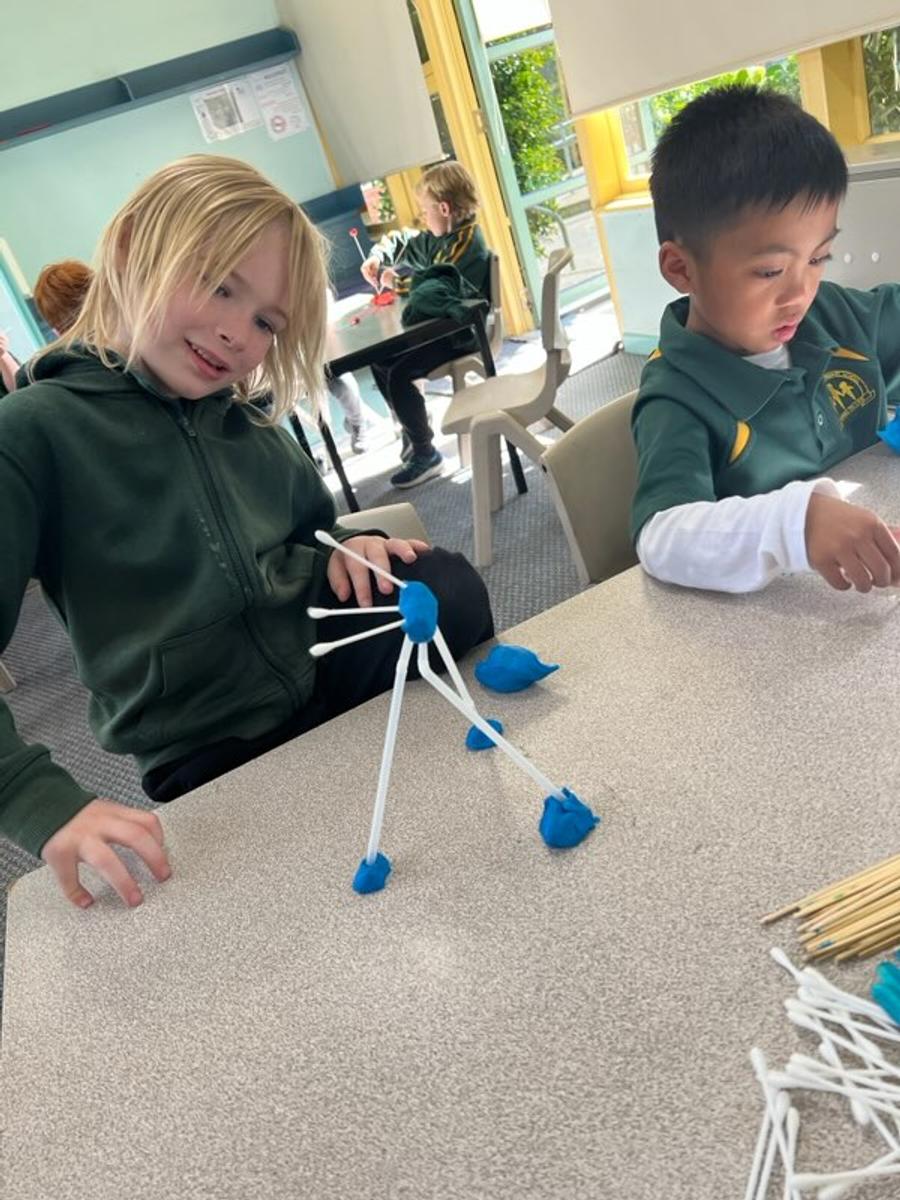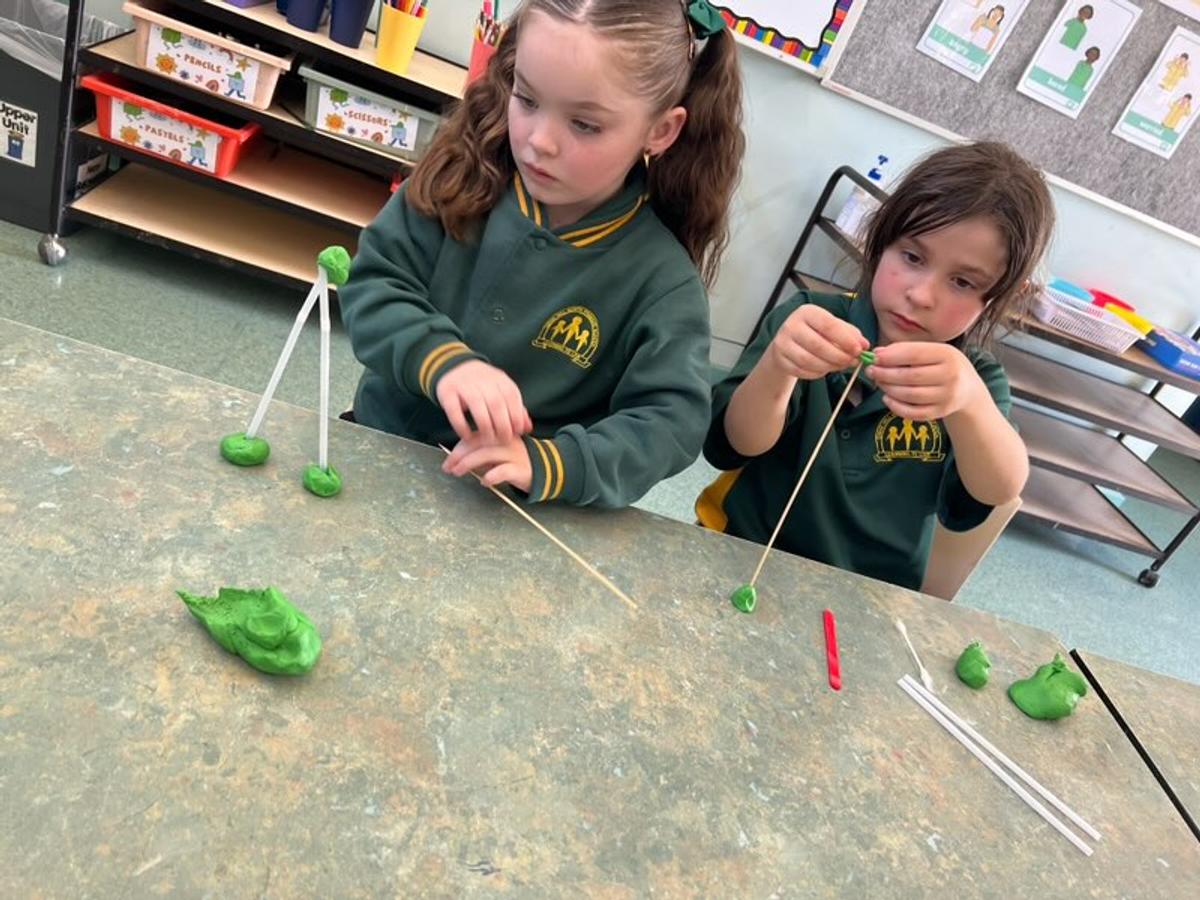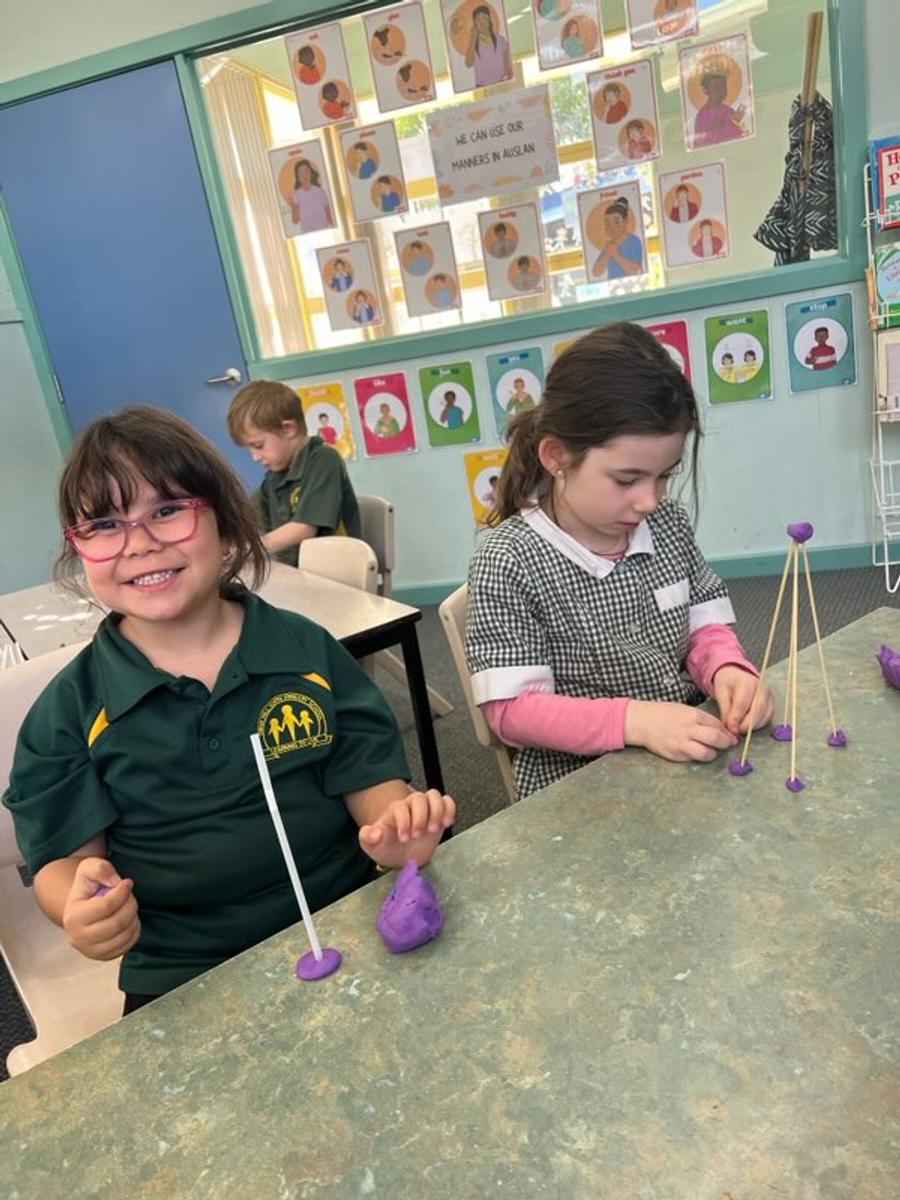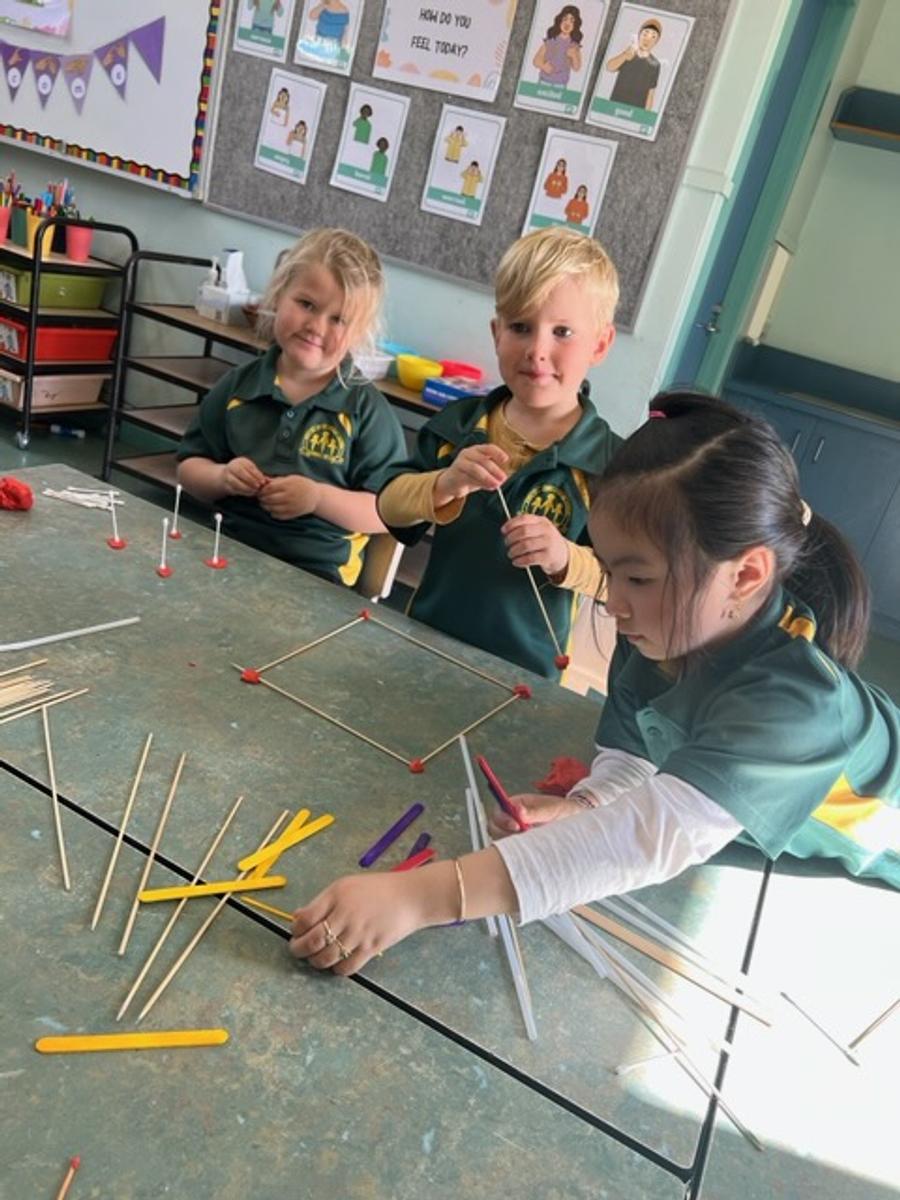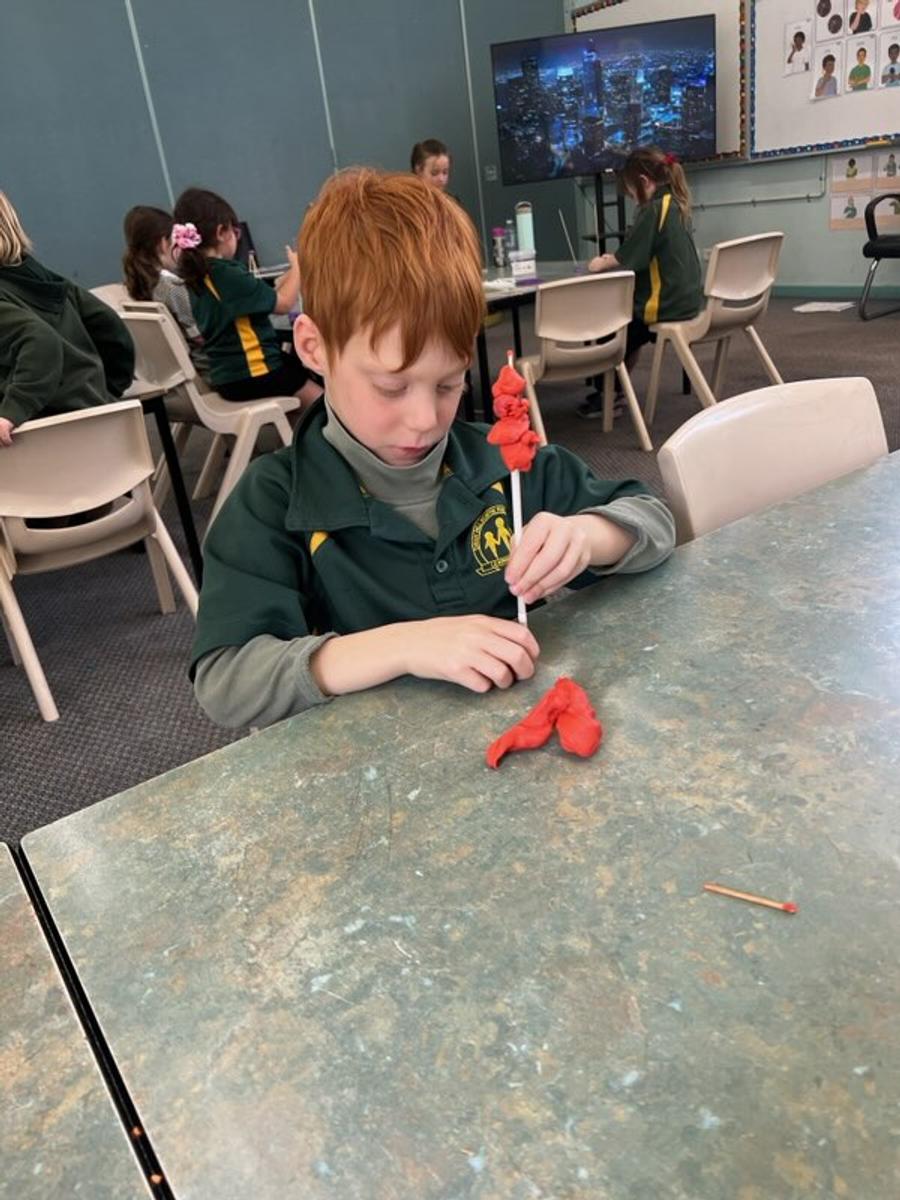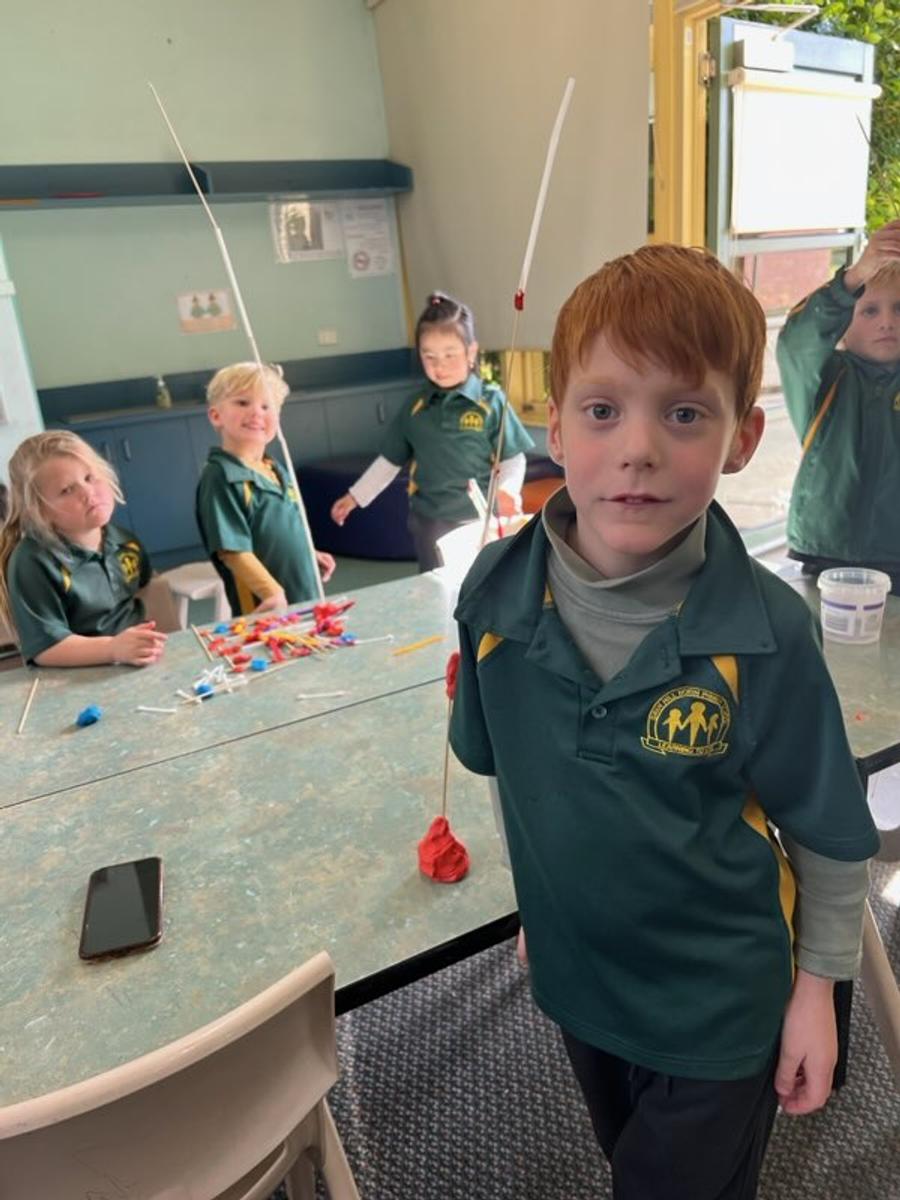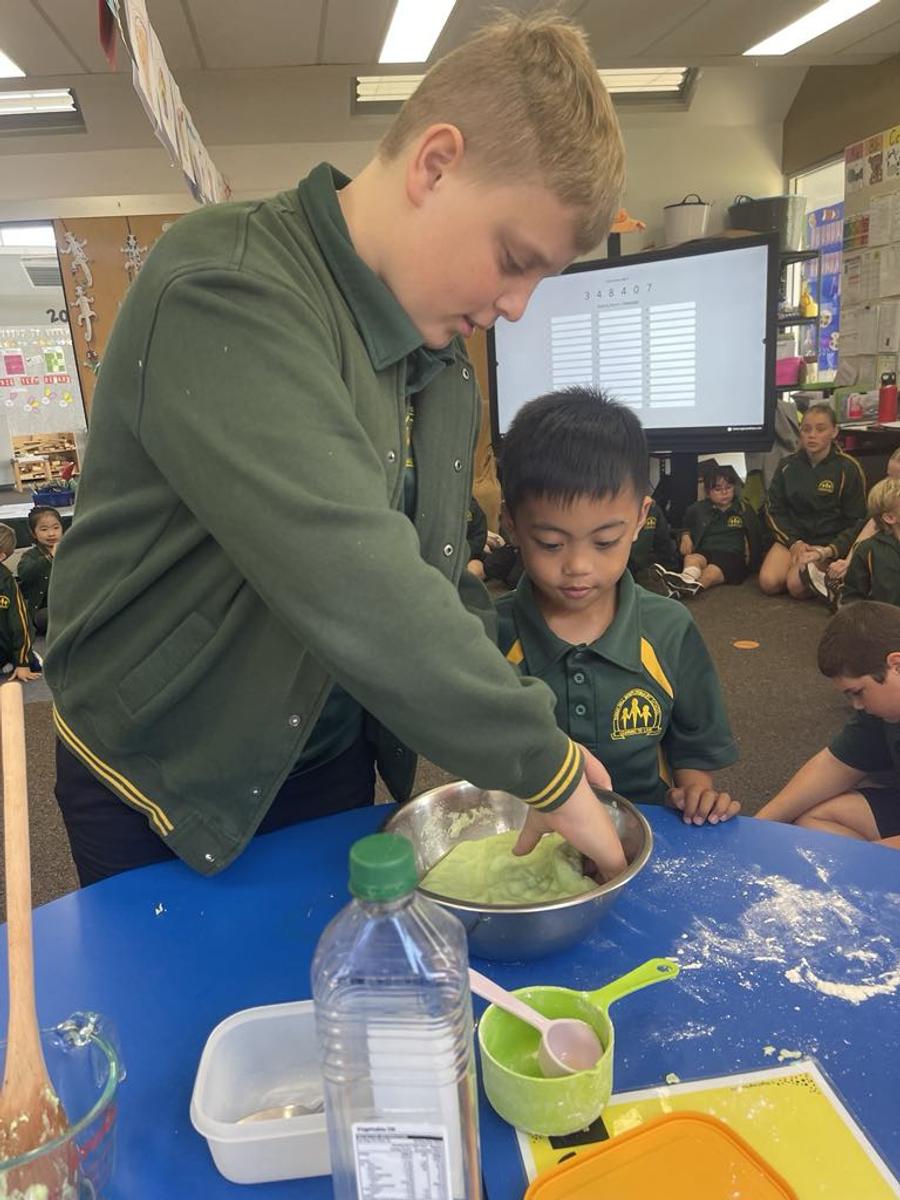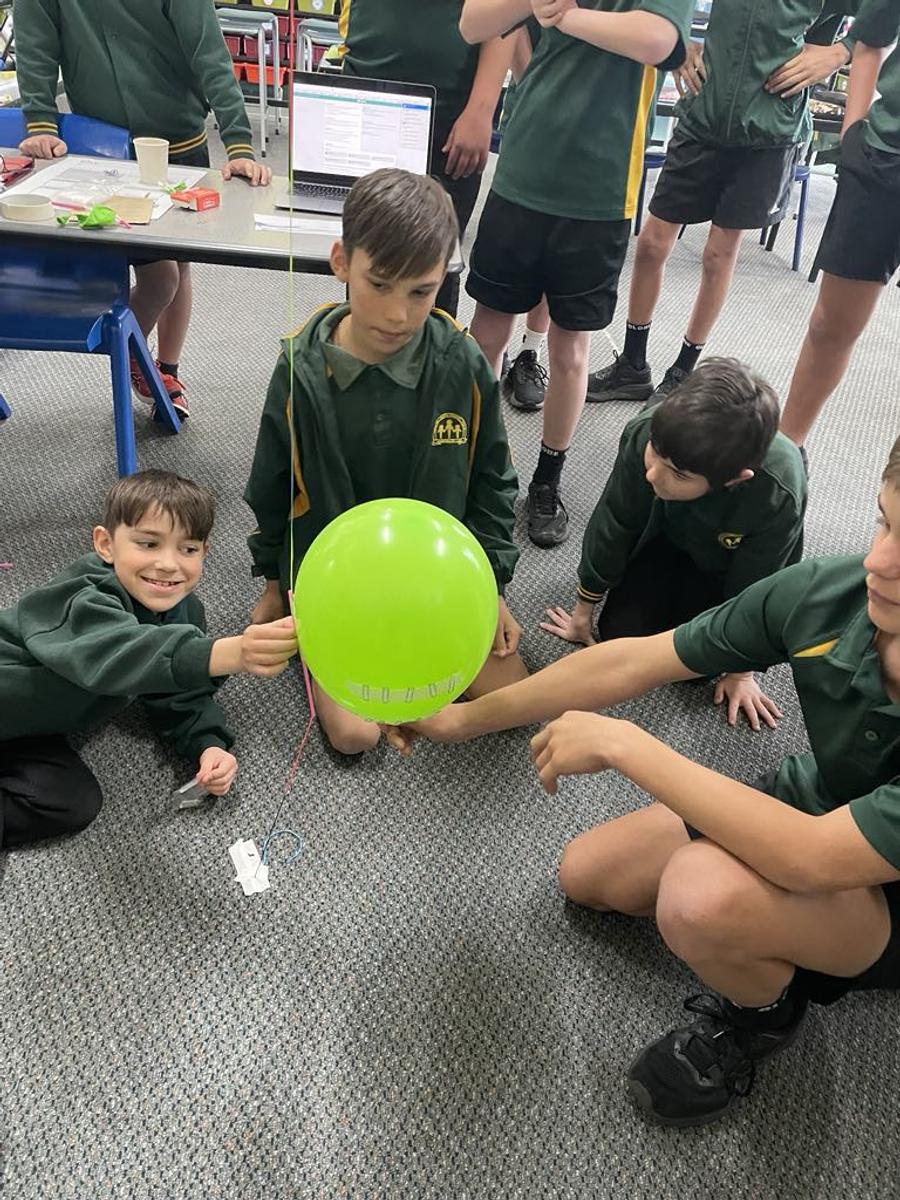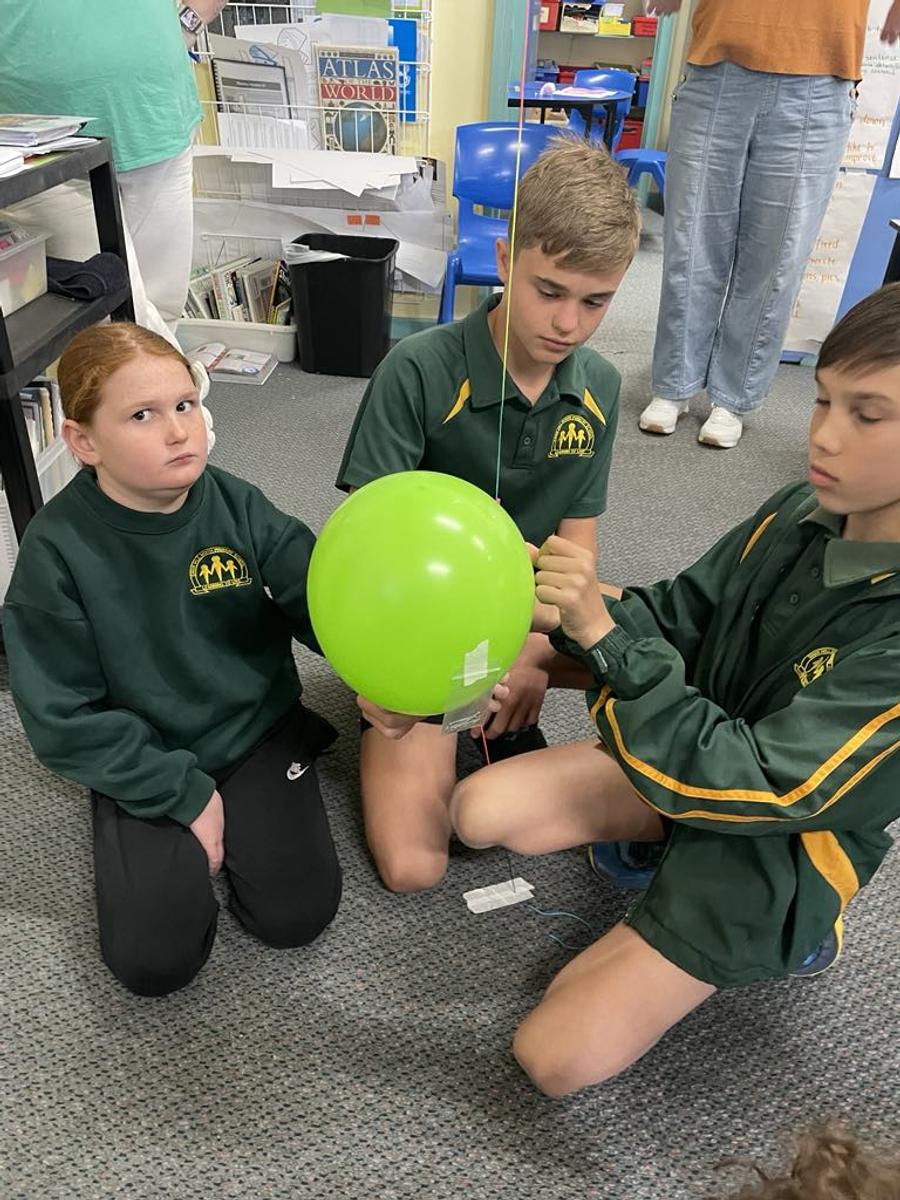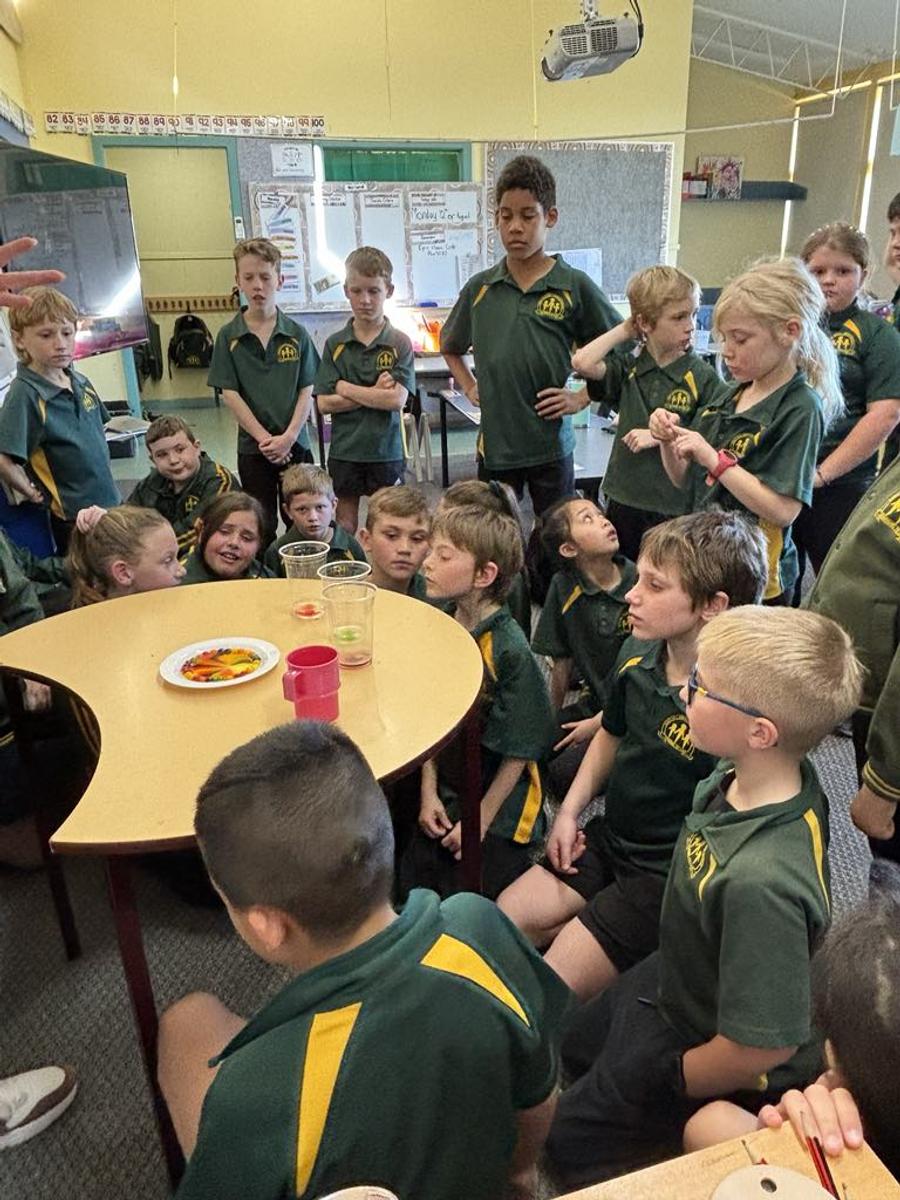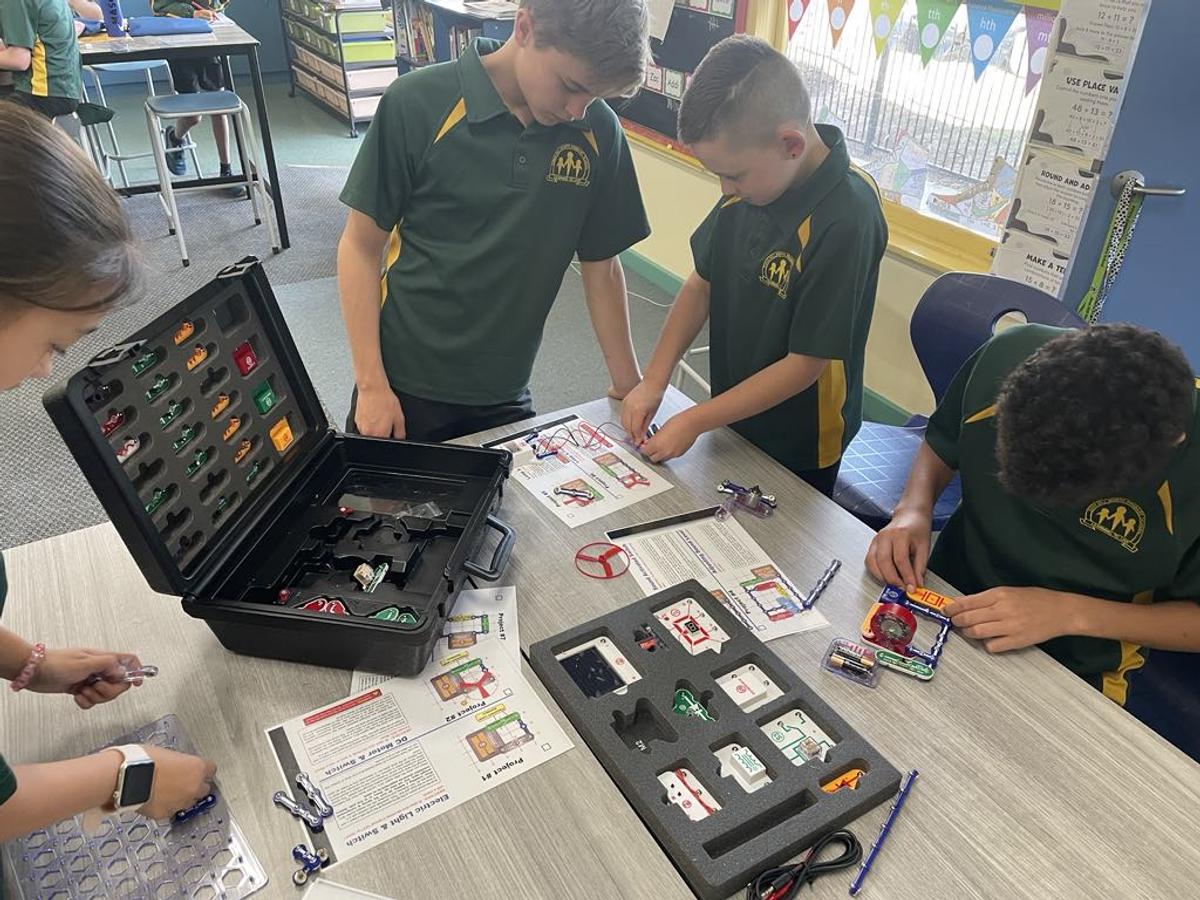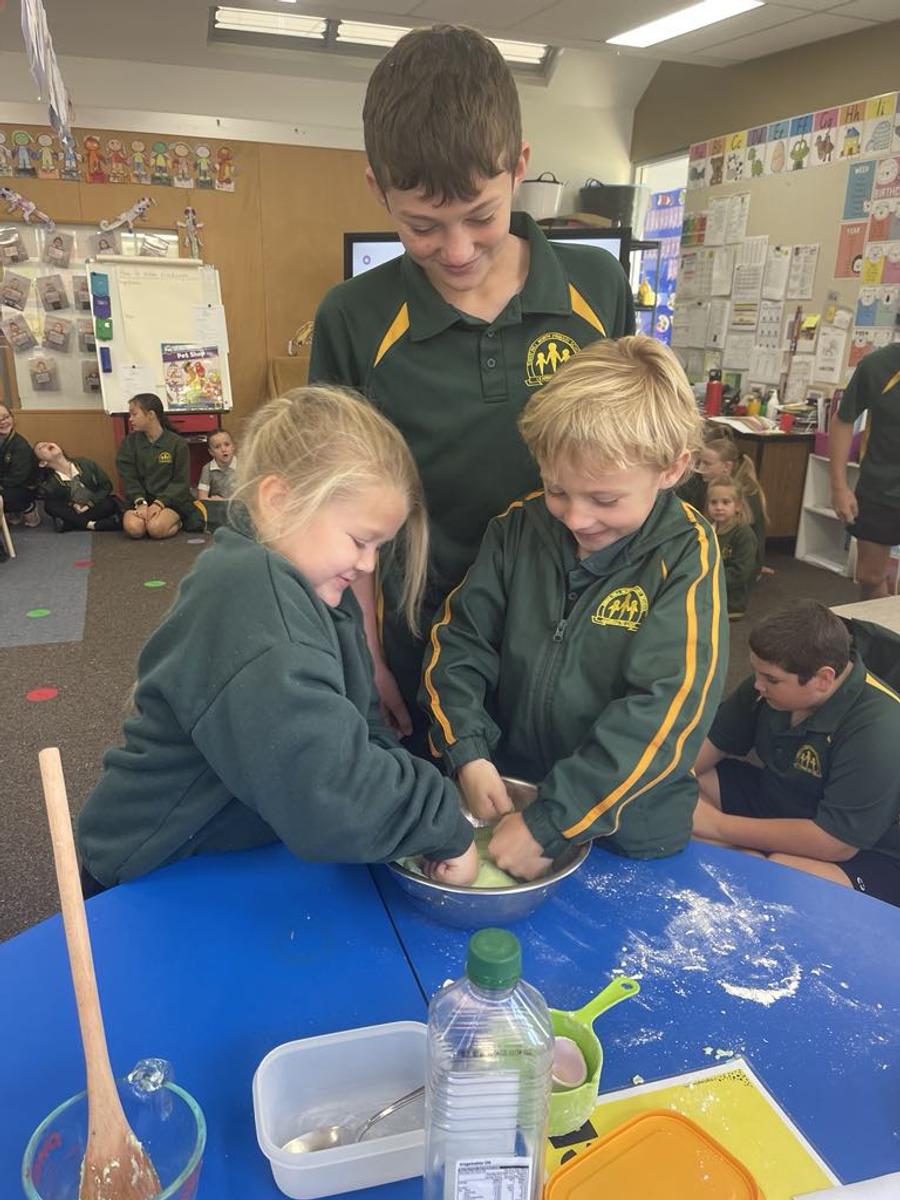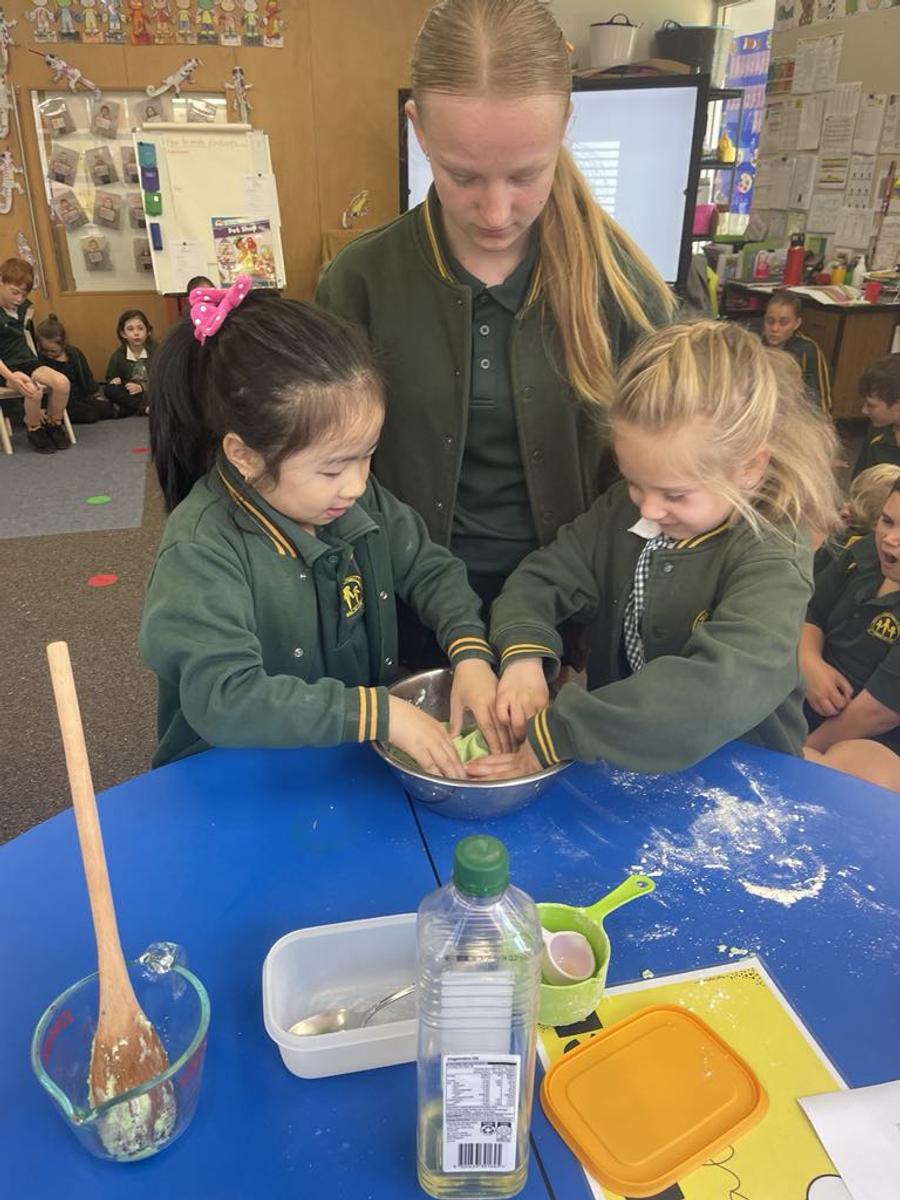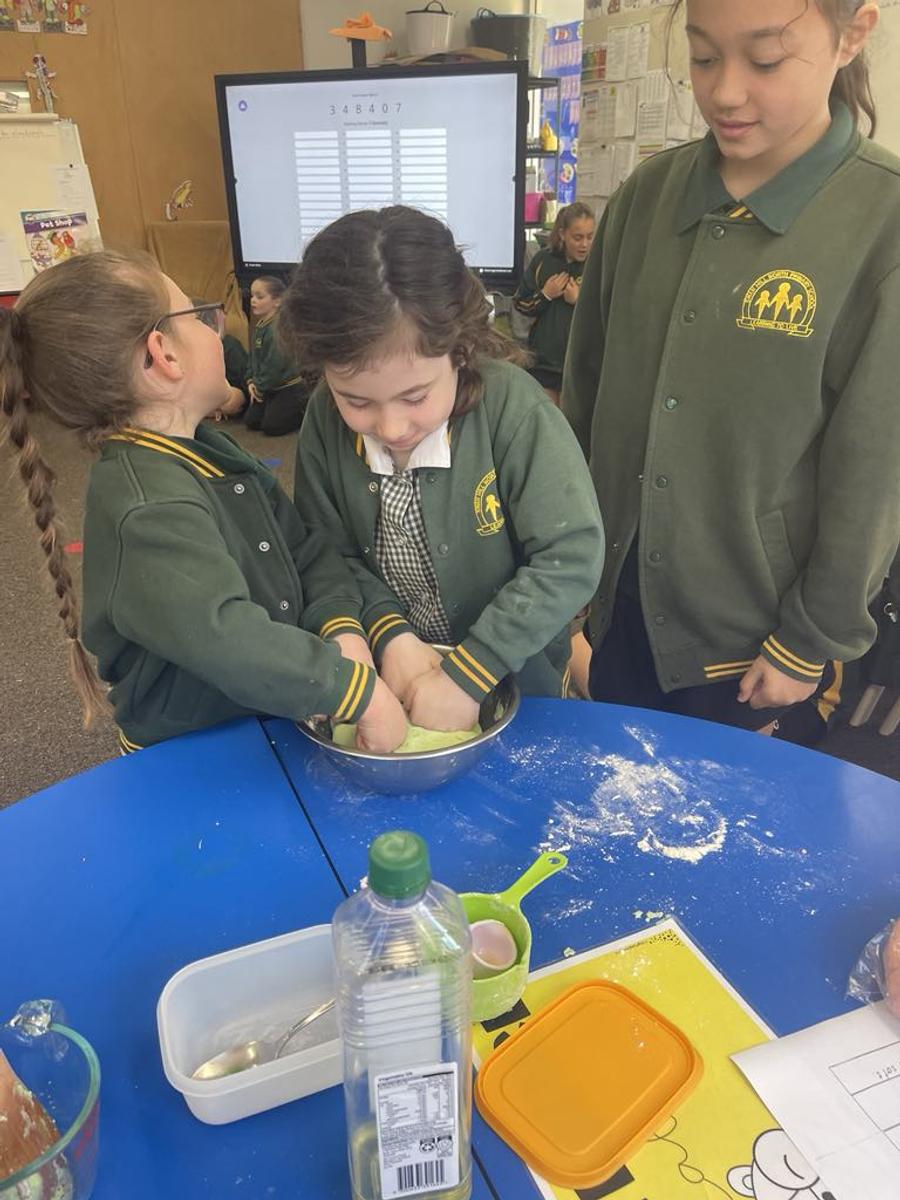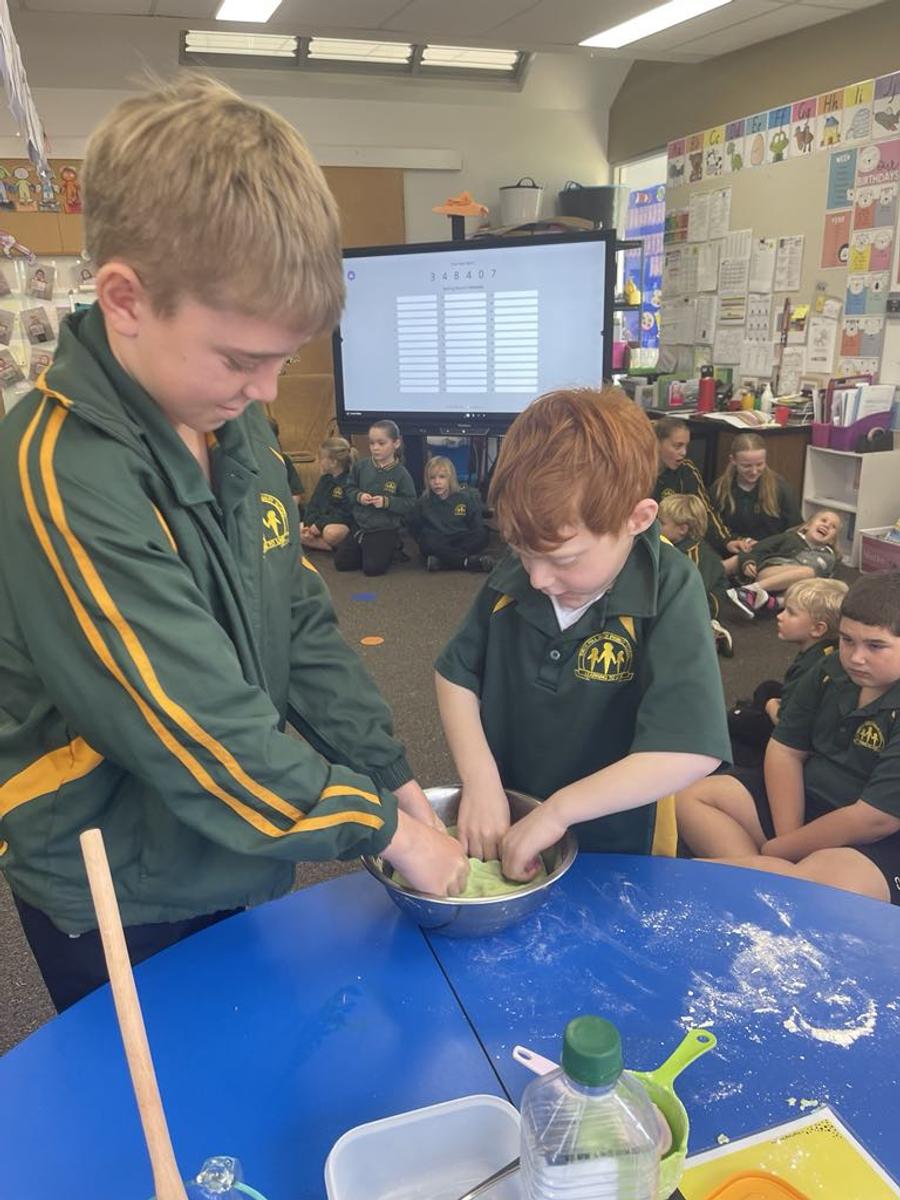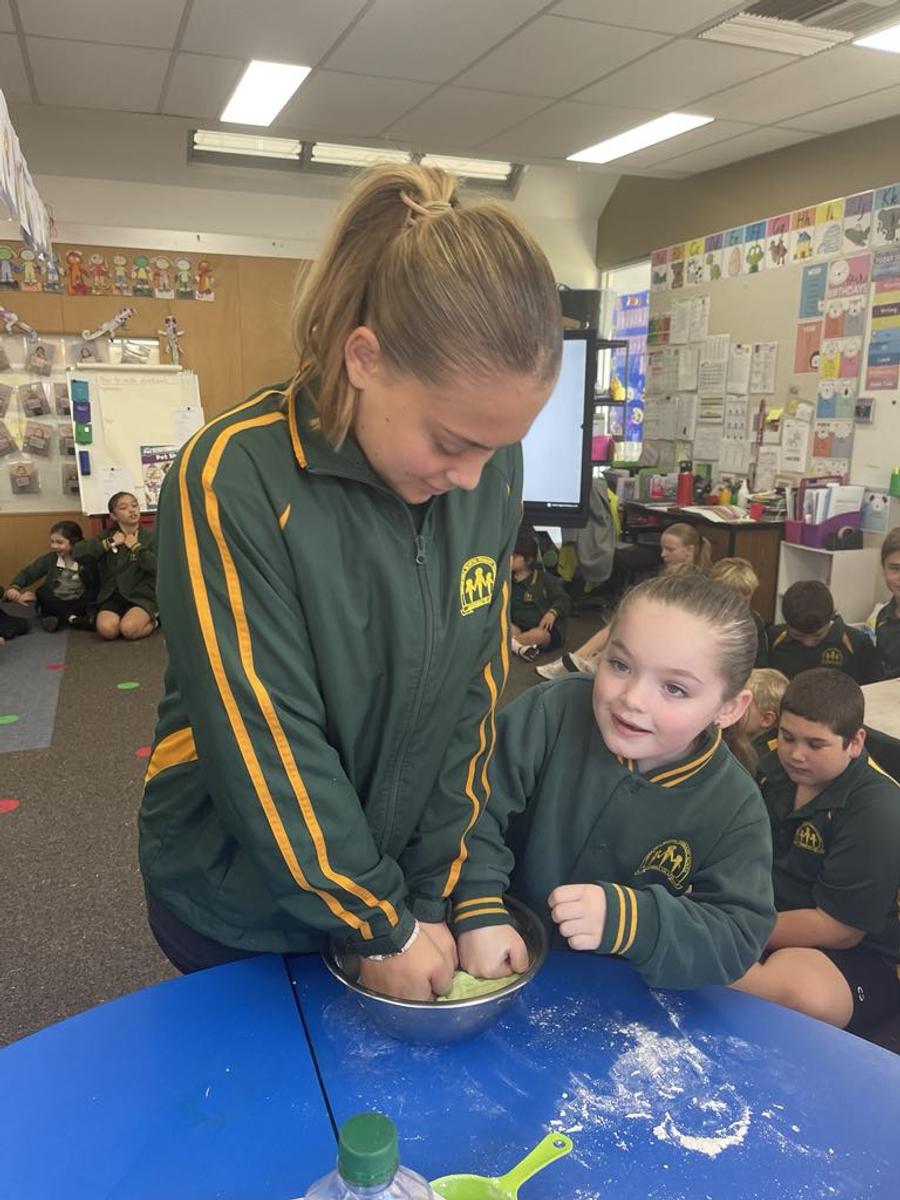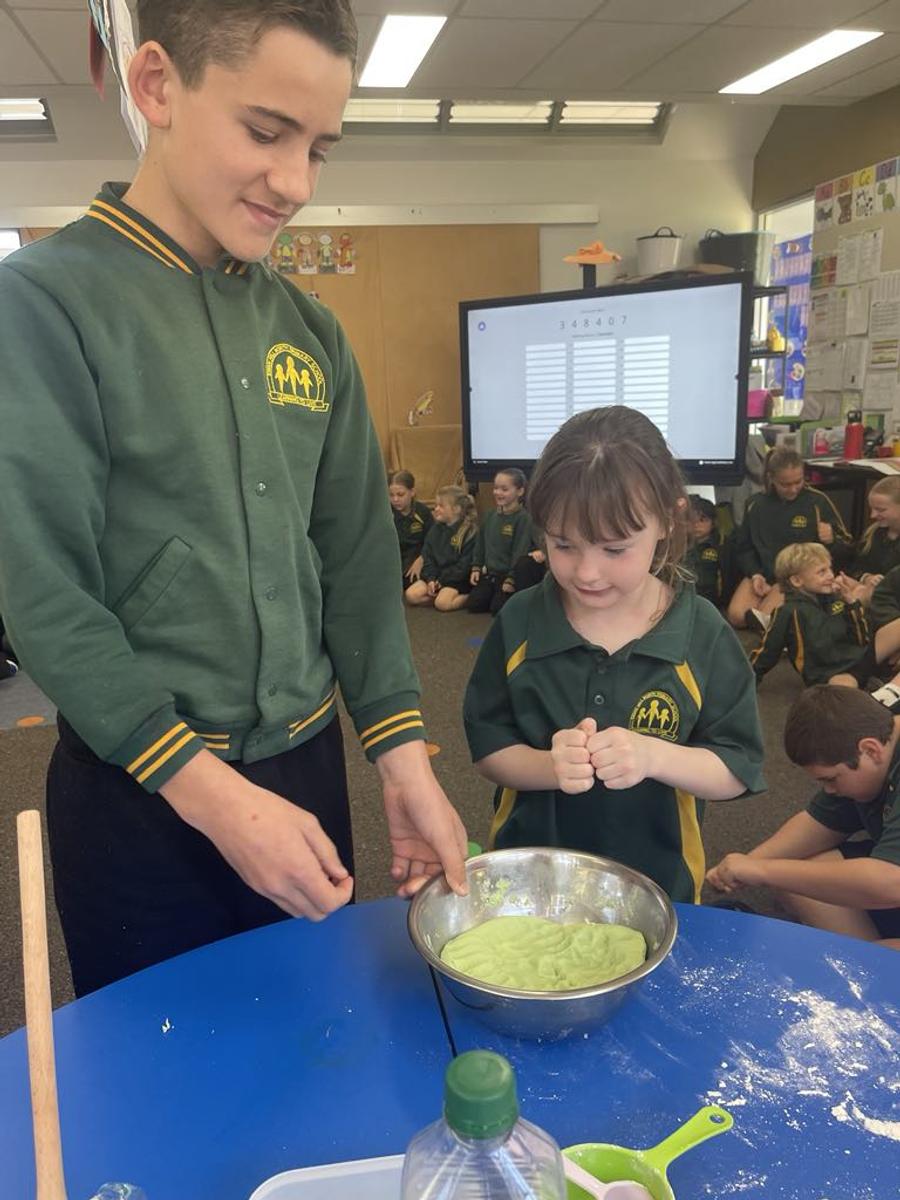Science Week

National Science Week is Australia’s annual celebration of science and technology.
Running each year in August, it features more than 1000 events around Australia, including those delivered by universities, schools, research institutions, libraries, museums and science centres.
During STEM class Foundation students completed a Science/ Design where they had to build the highest tower using sticks, straws and modelling clay.
Last week, from the 12th to the 16th of August, we celebrated Science Week, a nationwide event dedicated to inspiring students' curiosity and enthusiasm for science. Science Week encourages hands-on learning, exploration, and discovery, allowing students to delve into the wonders of the world around them through engaging experiments and activities.
In the upper unit, we immersed ourselves in various scientific investigations that tied into our Mappen unit and our novel study on Holes. We began by exploring the question of "Can light bend?" through light testing experiments. We hypothesised that light would bend when passing through different mediums, such as water and air, and we were thrilled to observe that light does indeed bend when it transitions from one medium to another, confirming our hypothesis and demonstrating the principles of refraction.
Next, we conducted soil testing to examine the water retention properties of different soil types. We hypothesised that clay soil would retain the most water while sandy soil would retain the least. However, our findings were surprising: the water passed straight through the clay, and the silt and sand retained more water. This experiment gave us a deeper understanding of soil composition, which was especially relevant to the dry, challenging environment depicted in Holes.
We then shifted our focus to the microscopic world by observing onion cells under a microscope. We hypothesized that we would be able to see the cell walls and even the nuclei of the cells. To enhance our observations, we compared by placing red food colouring on one of the onion samples and leaving the other without any colouring. The survival story inspired this experiment in Holes, where Stanley and Zero rely on onions for sustenance. The food colouring allowed us to see the cell structures more clearly, highlighting the cell walls and making the nuclei more visible than the uncoloured sample. This contrast gave us a deeper appreciation of the biological structure of plants and how staining can enhance microscopic observations.
To further our understanding of natural processes, we conducted an ice cube experiment to explore the water cycle. We hypothesized that the ice would melt and evaporate, forming condensation on the container lid and simulating rainfall. Our experiment confirmed this by observing the water melting, evaporating, and eventually condensing, beautifully illustrating the evaporation and condensation processes crucial to the water cycle.
Finally, our Year 6 students teamed up with their Foundation buddies to make play dough in a fun and creative twist. We hypothesized that the right combination of ingredients would result in a smooth, pliable dough perfect for moulding. This hands-on activity reinforced our understanding of mixtures and their properties and fostered teamwork and creativity among the students. Each of these experiments provided valuable insights and tied seamlessly into our broader learning themes, making Science Week a genuinely enriching experience for all.

